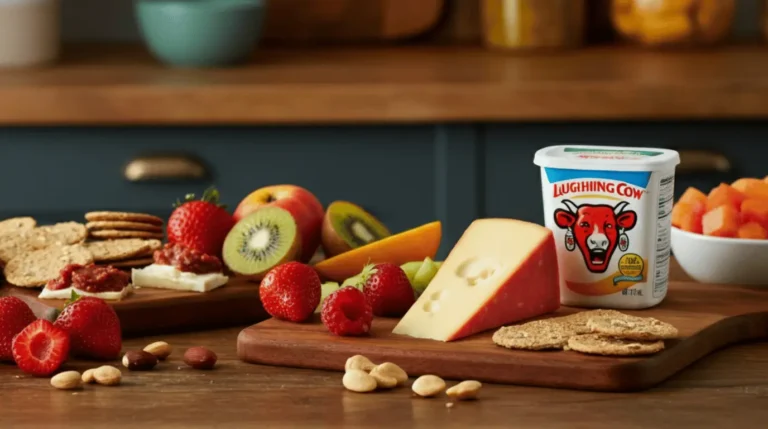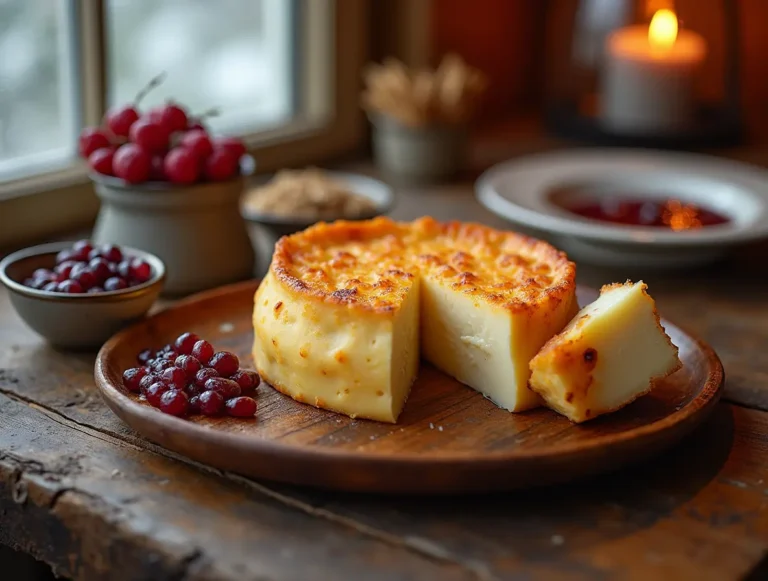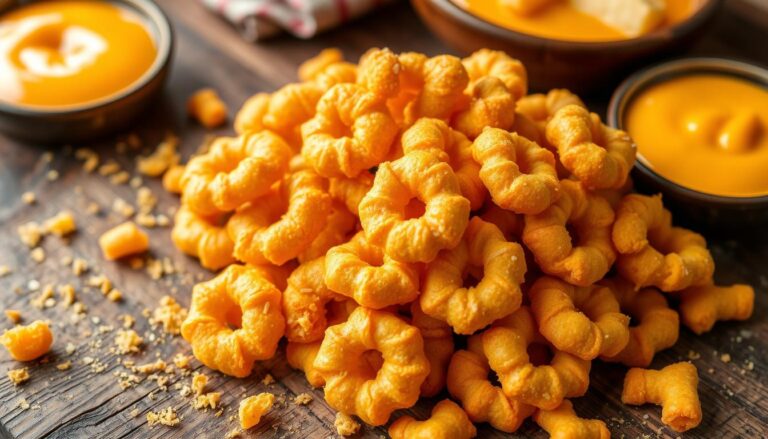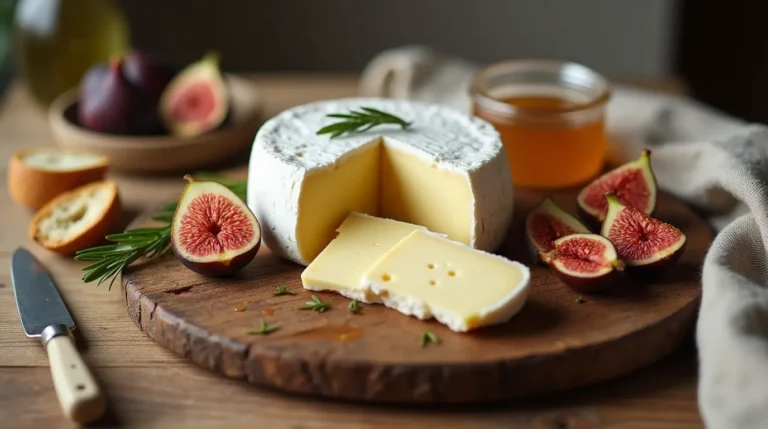Raw Cheese: A Guide to Natural Dairy Delights
I love cheese, and discovering raw, unpasteurized cheese changed my view. It’s not just about taste; it’s about tradition and health. Raw cheese brings back old cheesemaking ways that I think everyone should try.
This guide will take you on a journey through raw cheese’s history and its comeback. It’s perfect for cheese lovers and those looking for healthier dairy options. Get ready for a fun and educational read.
Table of Contents
Understanding Natural Cheese: From Traditional to Modern
The art of cheesemaking has a long history, dating back thousands of years. Ancient civilizations like the Egyptians and Sumerians used it as a key part of their diet. They used fresh milk and natural rennet to make cheese.
Today, industrial cheese production often changes the cheese’s taste and health benefits. But, there’s a growing love for traditional cheese, farmhouse cheese, handmade cheese, and small-batch cheese. People like David Asher of the Black Sheep School of Cheesemaking prefer traditional methods.
The Role of Natural Cheese in Modern Dieting
More people are choosing natural cheese for its health benefits and taste. Unlike mass-produced cheese, natural cheese keeps its natural flavors. It’s great for those who care about their diet.
Traditional vs Industrial Production Methods
- Traditional cheesemaking uses wooden vats, copper kettles, and natural rennet.
- Industrial methods include pasteurization, homogenization, and added cultures, changing the cheese’s taste and health.
- Even though handmade cheese and small-batch cheese are popular, natural cheesemaking is still rare in North America.
“Cheese production dates back over 4,000 years, with evidence of cheesemaking found in ancient Egyptian tombs and the Sumerian civilization.”

The history and variety of cheese-making traditions are fascinating. As more people seek authentic farmhouse cheese, it’s important to keep these traditional methods alive. This helps preserve the unique taste and health benefits of natural cheese.
Raw Cheese: Essential Benefits and Properties
If you love cheese, you might have heard about raw-milk cheese. It keeps the good stuff that’s lost in pasteurized cheese. This makes raw cheese taste better and can be easier to digest for some.
Raw-milk cheese is not just tasty; it’s also good for you. It’s packed with vitamins A, D, B-12, and minerals like calcium and phosphorus. Plus, it often has a better balance of omega-3 to omega-6 fats than regular dairy.
It’s important to know that raw cheese must age for at least 60 days in the U.S. to be safe. This aging process makes the cheese taste better and kills off bad bacteria. Some people think raw cheese is safer, but it’s true that raw dairy can sometimes cause illness.
| Nutrient | Raw Cheese | Pasteurized Cheese |
|---|---|---|
| Vitamins | Retains more vitamins A, B, D, E, and K | Slightly lower levels of water-soluble vitamins |
| Minerals | Richer in calcium, phosphorus, and magnesium | Similar mineral content |
| Fats | Higher in heart-healthy omega-3s and CLA | Lower omega-3 to omega-6 ratio |
| Enzymes | Retains natural enzymes that aid digestion | Enzymes are destroyed during pasteurization |
| Bacteria | Contains beneficial probiotics and antimicrobials | Lacks natural probiotic bacteria |

The nutritional profile of raw-milk cheese is amazing. But, it’s key to think about the risks and benefits before choosing. Whether to pick raw or pasteurized cheese depends on what you like and what’s best for your health.
The Art of Natural Cheesemaking Process
Making artisanal cheese is a labor of love. It needs a deep understanding of the cheesemaking process. The journey starts with selecting high-quality, fresh milk from grass-fed animals.
Traditional starters like whey, clabber, or kefir are key. They ferment the milk, adding unique flavors and textures.
Milk Selection and Preparation
The journey of artisan cheese begins with choosing the right milk. Cheesemakers pick milk from healthy, well-cared-for animals. This ensures the best raw ingredients.
The milk is then filtered, heated, and its pH adjusted. These steps prepare it for the cheesemaking process.
Curdling and Culturing Techniques
After preparation, the milk is coagulated. Rennet, from animal stomachs or plants, is added. This causes the curds to separate from the whey.
Specific cultures are then introduced. They help develop the cheese’s flavor and texture.
Aging and Ripening Methods
The final stage is aging and ripening. Cheeses are aged in natural caves or cellars. The temperature and humidity are carefully controlled.
This aging process can last weeks, months, or even years. It transforms the curds into rich, complex flavors.
The art of natural cheesemaking is a mix of tradition and innovation. Skilled cheesemakers use natural ingredients and techniques to create exceptional cheeses.
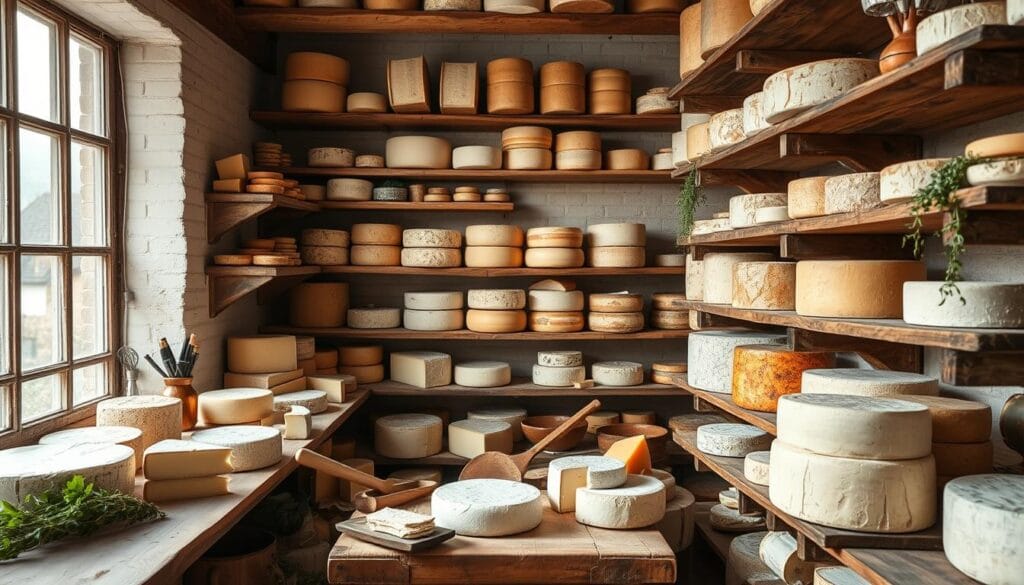
| Key Cheesemaking Stages | Description |
|---|---|
| Milk Selection and Preparation | Sourcing high-quality, fresh milk from grass-fed animals; filtering, heating, and adjusting the pH to create the perfect foundation. |
| Curdling and Culturing | Adding rennet to coagulate the milk and introduce specific cultures to develop desired flavors and textures. |
| Aging and Ripening | Carefully aging the cheeses in natural caves or cellars, with precise temperature and humidity control, to transform the curds into complex, aged flavors. |
Types of Raw Milk Cheeses and Their Characteristics
The world of raw cheese is vast and diverse. It offers a wide range of flavors and textures. From the robust, crumbly raw milk cheddar to the soft, creamy Brie, there’s a lot to discover. Italy alone has over 600 types of raw milk cheeses, each with its own unique taste and story.
Raw milk cheeses come from cows, sheep, goats, or buffalo. This gives them different flavors. For example, Parmigiano-Reggiano is nutty and aged, while Roquefort is tangy. Camembert is rich and decadent. These cheeses celebrate traditional cheesemaking and the richness of local terroirs.
In the U.S., raw milk cheeses must be aged for at least 60 days before they can be sold. This aging process enhances their flavors and textures. Organic Valley’s raw cheeses, made with vegetarian-friendly enzymes, show the high quality and taste of artisanal production.
| Raw Cheese Variety | Characteristics | Region of Origin |
|---|---|---|
| Parmigiano-Reggiano | Hard, nutty, and extensively aged | Emilia-Romagna, Italy |
| Roquefort | Soft, creamy, and tangy blue cheese | Roquefort-sur-Soulzon, France |
| Camembert | Soft, creamy, and pungent | Normandy, France |
| Gruyère | Hard, nutty, and slightly sweet | Gruyères, Switzerland |
| Manchego | Firm, slightly nutty, and sheep’s milk-based | La Mancha, Spain |
The love for raw milk cheeses is growing. These cheeses offer a unique taste experience. They invite cheese lovers to explore the wide range of flavors and textures available.
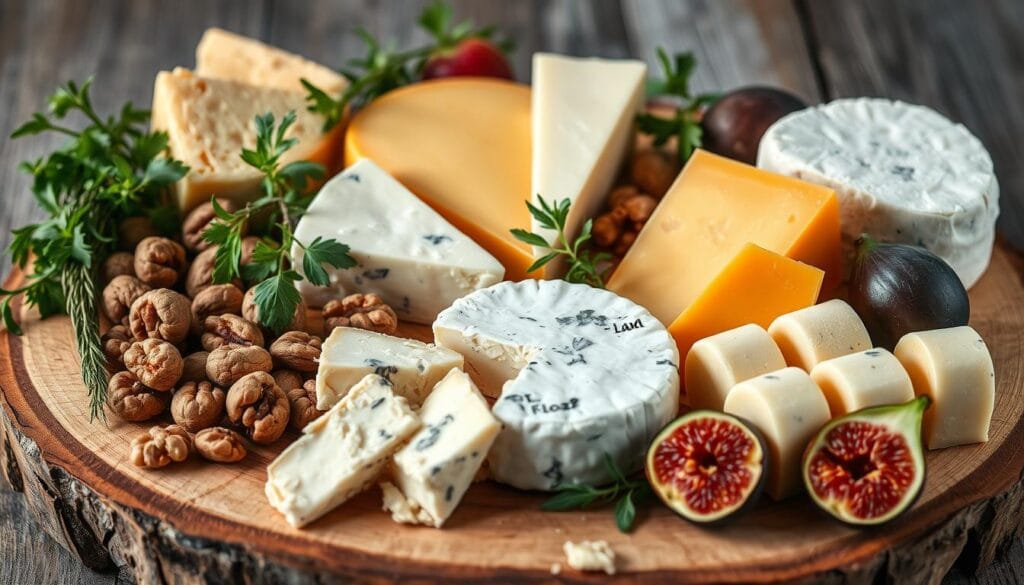
From Farm to Table: Sourcing Quality Raw Cheese
Enjoying raw cheese’s rich flavors starts with finding quality from local makers. These small cheesemakers use traditional methods and pasture-raised milk. You can find them at farmers markets, specialty shops, and even some supermarkets like Aldi.
Finding Local Artisanal Producers
Connecting with local cheesemakers ensures fresh, flavorful raw cheese. Look for those who focus on sustainable farming and use their own milk or nearby farms. Many offer tours, letting you see how cheese is made and learn about the milk’s origin.
What to Look for When Buying Raw Cheese
Check the label for milk source, aging, and production details. Choose cheeses from grass-fed or pasture-raised milk for richer flavors. The aging time is also key, as longer-aged cheeses have deeper tastes.
Storage and Handling Tips
Proper storage and handling keep raw cheese quality and safe. Store it in cheese paper or wax paper in the fridge, allowing it to breathe. Avoid plastic wraps to prevent mold. Use a sharp knife and clean cutting board when slicing.
By buying from local makers and following storage tips, you can enjoy raw cheese’s full flavor and health benefits.
The Role of Fermentation in Raw Cheese Production
Fermentation is key in making raw, natural cheeses. It brings out complex flavors and keeps the cheese safe from bad microbes. The unique microbes in natural starters like whey add to each cheese’s special taste.
These natural cultures pass from one day to the next, letting the milk’s microbes shine. Fermentation in cheese making is like in sourdough bread and wine. It lets microbes shape the final taste.
The Science of Cheese Fermentation
Lactic acid fermentation is used in many cheeses, like Cheddar and mozzarella. It helps create the cheese’s taste.
Citrate fermentation adds flavor to cheeses like Gouda and cottage cheese. It also makes small holes in the cheese.
Propionic acid fermentation gives Swiss cheeses their sweet, nutty taste.
Yeasts in ethanol fermentation add flavor to cheeses like Camembert. They turn lactic acid into CO2 and ethanol.
Lipase enzymes add flavor to cheeses like Parmesan. They are lost in pasteurization.
Optimizing Fermentation for Superior Raw Cheese
Keeping the right temperature, humidity, and cleanliness is key for good fermentation. The best ripening temperature is about 13°C. Humidity affects how fast the cheese ripens. Clean equipment is also crucial to avoid bad microbes.
By controlling fermentation, cheesemakers can make amazing raw cheese. These cheeses are full of flavor and good for you.
Safety Considerations and Quality Standards
Enjoying raw cheese safely and with quality is key. In the U.S., raw cheese must age for at least 60 days. This aging process is vital for its safety.
Regulatory Requirements
Raw cheese makers must follow strict rules. They must control temperature and humidity during aging. They also test for harmful bacteria like Listeria and Salmonella.
Best Practices for Consumption
- Buy raw cheese from trusted sources that focus on safety.
- Keep raw cheese at the right temperature and humidity.
- Raw cheese is not safe for pregnant women, young kids, or those with weak immune systems.
Quality Indicators
Look for these signs of quality in raw cheese:
- Make sure it’s labeled as “raw” or “unpasteurized”.
- Check its texture and smell to match the type of cheese.
- It should not have mold unless it’s meant to.
Raw cheese can be safe and tasty if made and handled right. But, knowing the risks and following best practices is crucial for a safe and enjoyable experience.
| Quality Indicator | Description |
|---|---|
| Proper Labeling | The cheese should be clearly labeled as “raw” or “unpasteurized”. |
| Texture and Aroma | The cheese should have the appropriate texture and aroma for the specific variety. |
| Absence of Mold | The cheese should be free of any unintended mold growth (unless intentionally present). |
Regional Raw Cheese Varieties and Traditions
Across the globe, many regions have their own raw cheese traditions. These reflect local farming heritage and culture. In Italy, each region has its own unique cheeses made from cow, sheep, and goat’s milk.
The Veneto region is famous for its raw milk cheeses. France is known for its raw milk cheeses like Camembert de Normandie and Brie de Meaux. Switzerland’s Emmentaler and Gruyère are also made with raw milk, showing the country’s long cheesemaking history.
Exploring cheeses like Sicily’s Ragusano or Wisconsin’s Swiss-style cheeses is exciting. It shows the diversity of artisanal dairy products. By celebrating these local cheeses, we appreciate the cultural value and skill in natural cheesemaking.
FAQ
Q: What is raw cheese?
A: Raw cheese is made from milk that hasn’t been heated. It’s aged to kill off bad bacteria but keeps good probiotics. This method brings back old cheesemaking ways, giving better taste and health perks.
Q: What are the benefits of raw cheese?
A: Raw cheese keeps enzymes and good bacteria lost in pasteurization. It tastes better and might be easier to digest. It’s packed with vitamins A, D, B-12, omega-3s, and CLA.
Q: How is raw cheese made?
A: Making raw cheese starts with top-notch, fresh milk from grass-fed animals. Cheesemakers use natural starters like whey or kefir. Rennet, from animal stomachs or plants, coagulates the milk. Then, the curd is shaped and aged.
Q: What are the different types of raw milk cheeses?
A: There’s a wide range of raw milk cheeses, each with its own taste. You can find raw cheddar, gouda, brie, and blue cheeses. They come from cow, sheep, goat, or buffalo milk, offering different flavors and textures.
Q: Where can I buy quality raw cheese?
A: You can find great raw cheese at local farms, farmers markets, and specialty shops. Some big stores like Aldi, Lidl, and Tesco also carry it.
Q: Is raw cheese safe to consume?
A: In the US, raw cheese must age for 60 days to be sold. This aging kills off bad bacteria. Always buy from trusted places, store it right, and avoid it if you’re pregnant, young, or have a weak immune system.
Q: How does regional tradition influence raw cheese varieties?
A: Each region has its own raw cheese traditions. In Italy, cheeses reflect local farming and culture. France is known for raw milk cheeses like Camembert and Brie. Switzerland’s Emmentaler and Gruyère also come from raw milk.


